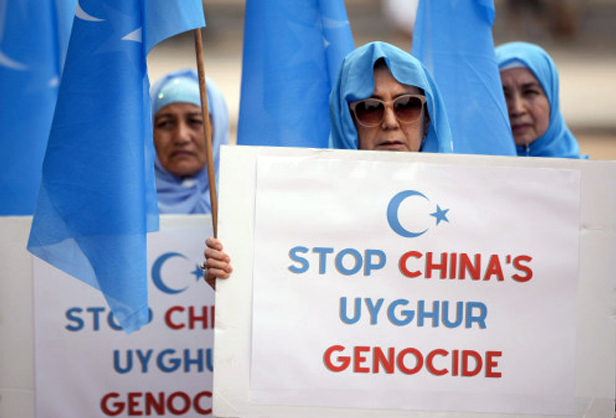May 09, 2024
Study Finds Xinjiang Cotton in 19% of Apparel Sold in US and Abroad
Cotton from the region in China is banned in the U.S. due to alleged human rights abuses occurring there.
A study from the natural resource analytics firm Stratum Reservoir and DNA analytics lab Applied DNA Sciences has found that banned cotton from Xinjiang, China was present in 19% of sampled apparel sold between February 2023 and March 2024 in the U.S. and abroad.
According to Reuters, the study evaluated cotton swabs, apparel sold at major retailers and online, and footwear products. The firms that conducted the study declined to say where the products were sold, but told Reuters that they “purchased goods within the U.S. and from e-commerce brands that ship to the country.”

A Uyghur picks cotton in a field in Xinhe County of the Xinjiang Uyghur Autonomous Region, China. | Credit: Getty Images by China Photos
It’s a significant finding, as there’s been a global effort to minimize or outright ban the usage of cotton sourced from China’s Xinjiang province. Xinjiang is the hub of China’s cotton output, and has traditionally been the source of cotton used to make apparel and other products used around the world.
Still, the troubled region is also the site of what watchdogs and government agencies have called human rights abuses – even outright genocide – against the region’s Uyghur Muslim ethnic group. Forced encampment and forced labor in the cotton manufacturing industry is rampant, critics say.
As a result of such alleged abuses, there came to the fore legislation like 2022’s Uyghur Forced Labor Prevention Act in the U.S., which banned Xinjiang cotton from being imported into the United States or used in products imported into the nation. Federal authorities have taken enforcement seriously.
Nonetheless, the new study from Stratum Reservoir and Applied DNA Sciences suggests more than a little Xinjiang cotton is still entering the U.S.
Notably, the research also determined that of the products found to contain Chinese cotton, 57% had labels that claimed the materials were solely sourced in the United States. And, of the garments that were found to contain Chinese cotton, Reuters reported that two-thirds blended the banned material with cotton and other materials from outside of Xinjiang.

Supporters of the East Turkistan National Awakening Movement rally in front of the White House to commemorate the 13th anniversary of the July 5th Urumqi Massacre. The group is also calling on governments to support the Uyghurs’ right to self-determination by recognizing East Turkistan (Xinjiang) as an occupied country. | Credit: Getty Images by Drew Angerer
To determine the origin of the cotton, the study used isotopic testing, which can trace cotton to its source by analyzing amounts of carbon and hydrogen in the crops and environment in which they are grown.
Given that Xinjiang has historically produced nearly all of the cotton that China uses, as well as nearly a quarter of the cotton used globally, it’s no small task for manufacturers and importers to fully sever ties with the region’s cotton industry, though the promotional products market has been making efforts to do so. At a minimum, the new study is a reminder to suppliers and distributors that source directly from abroad to thoroughly vet their supply chains.
Even before the Uyghur Forced Labor Prevention Act was put in place, human rights groups were consistent in their messaging and hopes that the apparel industry would shift away from Xinjiang cotton.
In 2021, the sportswear brand ASICS received criticism for standing by its decision to use Xinjiang cotton for the Australian Olympic team’s apparel and footwear.
In early 2022, a collection of 400 human rights groups condemned the IOC ahead of the Tokyo Olympics for using Xinjiang cotton for official merchandise.
More recently, a bi-partisan commission in the U.S. formally asked the NBA to stop using Chinese cotton in merchandise, sending a letter to NBA Commissioner Adam Silver asking him to meet with various groups “to learn about the sad reality of genocide,” ESPN reported at the time.
